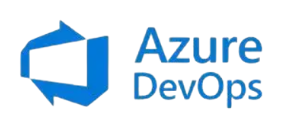A logistics company reached out to Improving Winnipeg to develop a backup and disaster recovery strategy for their Microsoft Azure-hosted customer-facing web applications. The customer had no disaster recovery process for a regional Azure outage event. Due to the nature of their business, having an Azure recovery strategy was a smart investment for our client.
The Problem
Our client rents out trailer chassis – an application that is hosted in Microsoft Azure. In the event of an Azure outage, their business would be severely impacted. Customers would lose the ability to access the app to rent chassis. The client identified that an outage of more than 2 hours would not be acceptable.
In an outage scenario, to bring it back up, our client would have to manually recreate everything. They would have to find a database backup and rebuild all the infrastructure in Azure to get the sites back up and running. This process could take anywhere from a few hours to a few days. From a business perspective, this would be devastating. The needed a quicker and more automated way to get back up and running if the worst-case scenario were to happen.
Improving Winnipeg’s Solution
Improving Winnipeg’s Azure Solution Architect and expert Azure DevOps Engineer contractor consultant built an Infrastructure as a Service solution (IaaS). We built out all the Azure resources in Bicep, a domain-specific language used to deploy Azure resources.
We used this to create automated YAML pipelines in Azure DevOps for continuous integration and delivery that will execute the Bicep files to create Azure resources automatically. The pipeline will also restore the database from the latest point-in-time backup that is available in the geo-replicated region. The web application code is also automatically published into the Azure app services. If the Azure region were to go down, it would take only 30 – 60 minutes to get everything back up and running in another Azure region
We also provided documentation of all the manual steps and configurations, as this was not something our client currently had. We delivered a 30+-page document detailing these manual steps and configurations.
Finally, some of our client’s existing infrastructure did not have backup policies, primarily their Azure Virtual Machines and Azure SQL databases. To have something to restore from, we needed to create backup policies to create the backup artifacts needed to restore from.
Solution Benefits
The main benefit is that in the event of an Azure outage, our client can quickly restore their environment for customer access. This means the impact to their business will be significantly less in terms of lost business and lost revenue.
The Azure resources covered and included in our disaster recovery solution are App services, virtual machines, SQL databases and servers, key vault and other supporting resources required.
Our team has been working hard these last few months, and we are excited to share our success with you. Don’t forget to subscribe to stay updated on our most recent Microsoft 365 projects. And if you are in need of an Azure recovery strategy, fill out the form at the bottom of the page and someone will be in touch.
discover more
Growth is the hallmark of good business. Staying on top of industry trends, learning new skills, and understanding shifts in the market help deliver better products and services to clients. This blog will detail how we stay curious and what…
A leading retail logistics provider approached Improving Winnipeg with the request to develop a scalable MVP and a foundation for a new billing application. Our client has numerous well-established Canadian retail relationships and transportation partnerships. They have been on the…
With the amount of innovation and rapid change, empathy might seem like it’s nice to have in a business, but not essential. A soft skill, if you will. At Improving, we believe the opposite: empathy is a superpower. Empathy in tech…
Let’s Build Something Amazing Together
From concept to handoff, we’d love to learn more about what you are working on.
Send us a message below or drop us a line at 1-800-989-6022.


